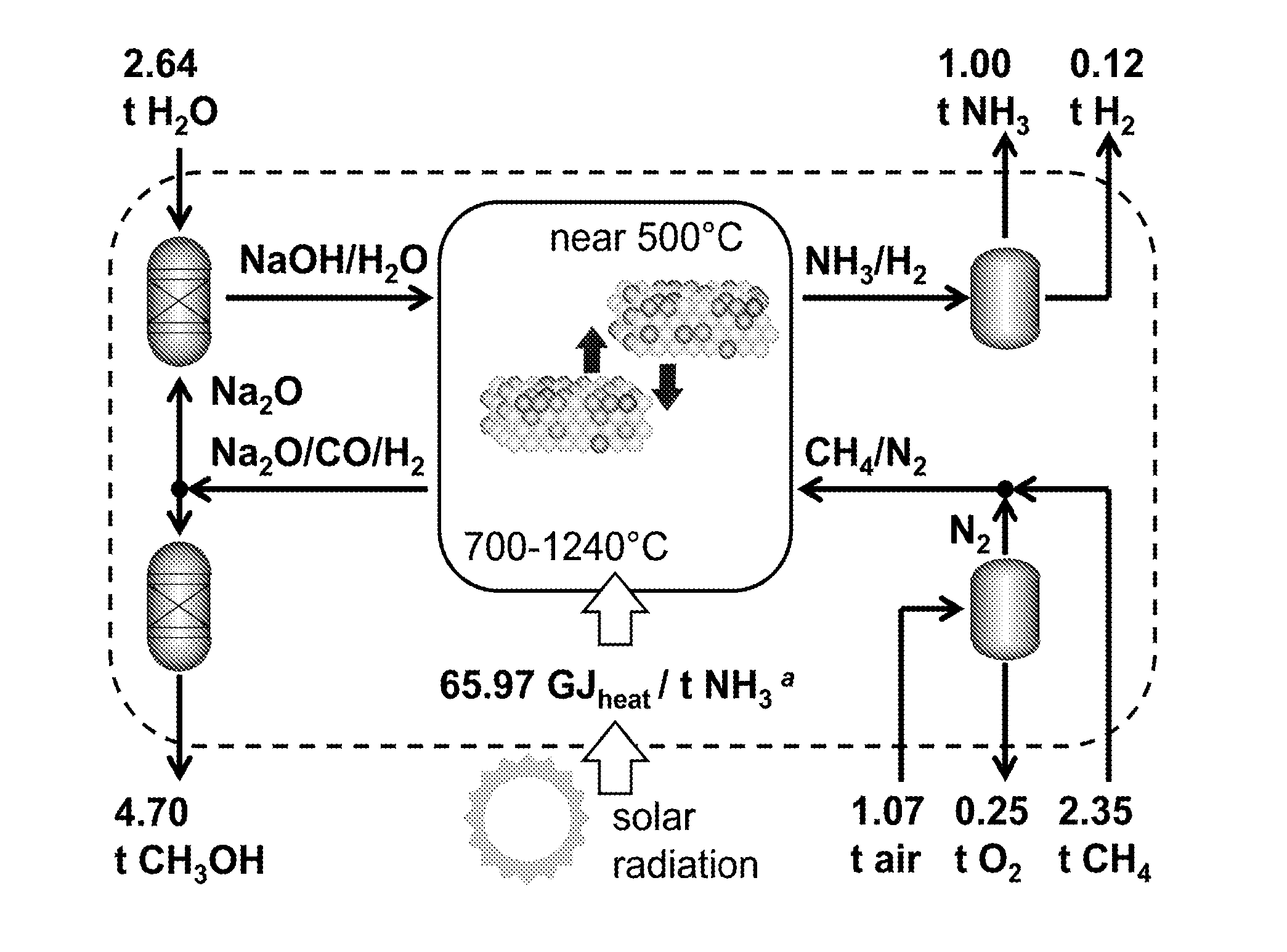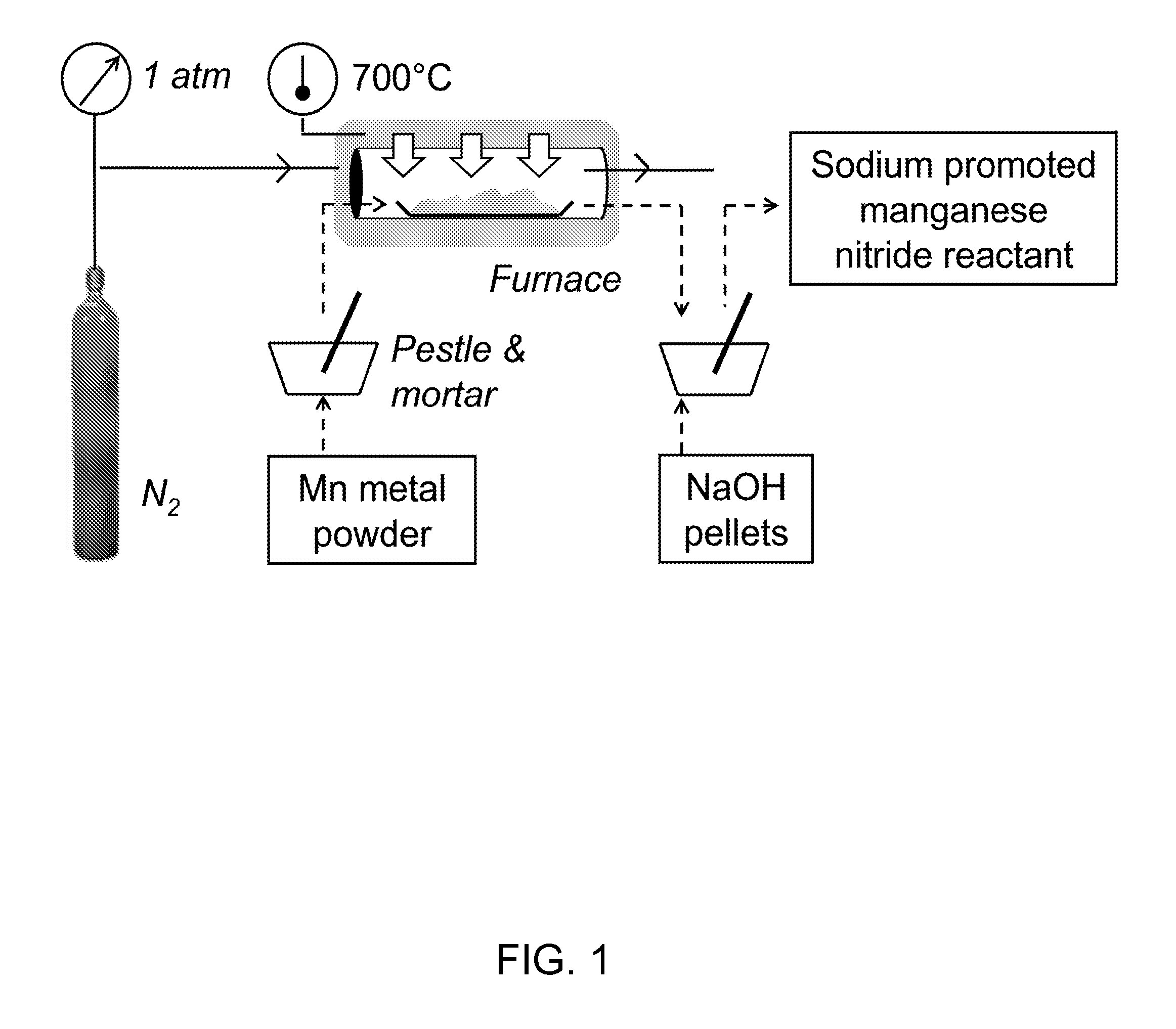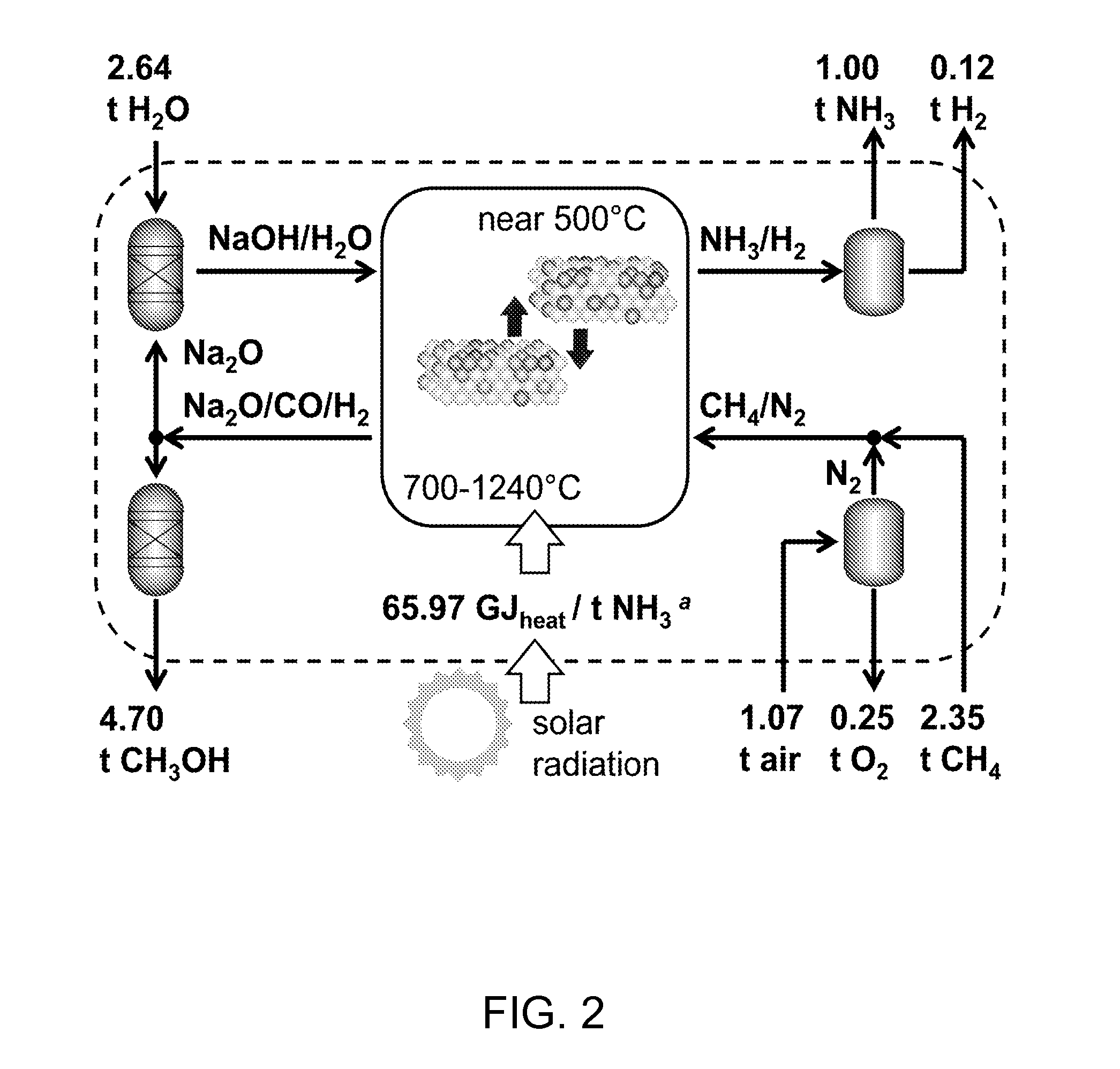Thermochemical ammonia and hydrocarbons
- Summary
- Abstract
- Description
- Claims
- Application Information
AI Technical Summary
Benefits of technology
Problems solved by technology
Method used
Image
Examples
Example
Example 1
Synthesis of Sodium Ion-Promoted Manganese Nitride
[0041]Manganese nitride (64-67 wt % ε-Mn4N, 25-36 wt % ζ-Mn6N2.58, 46±19 μm average particle diameter, 270±3 m2 kg−1 specific BET surface area) was synthesized by heating 2.0-3.0 g Mn metal for 2 h at 700° C. in a flow of 1.8±0.1 L(STP) N2 min−1.
[0042]The heating rate, rH, was about rH=At+B, where t is the heating time in min, A=−6.91° C. min−2, and B=77.4° C. min−1). The cooling rate was in the range of −13.5 to −2.73° C. s−1 within the first 60 s, −3.85 to 0.767° C. s−1 at 60 to 180 s and >−0.767° C. s−1 at >180 s.
[0043]The material was promoted with Na+ via milling 0.47±0.06 g nitride (2.3±0.2 mmol lattice nitrogen) with 1.02±0.01 g NaOH (99.6%, certified ACS pellets) using pestle and mortar. The synthesis scheme is schematically depicted in FIG. 1. As a comparative example, the material was promoted with 0.483±0.001 g Ca(OH)2 / CaO (97.3% pure, 75 wt % CaO, 25 wt % Ca(OH)2.
Use of Sodium Ion-Promoted Manganese Nitride
[0044]...
Example
Example 2
Hydrocarbons from Alkali / Alkaline Earth Metal-Promoted Transition Metal Reactants with Carbon Contained in the Solid Reactant
[0057]Given the chemical similarities between metal nitrides and metal carbides, cation promoted transition metal reactants containing carbon in the solid state can reveal a capability for hydrogenation of the secondary non-metal (carbon) that is comparable to the functionality of the cation promoted transition metal reactants containing nitrogen in the solid state.
[0058]This assessment is based on comparable bonding properties (metal-nitrogen bond vs. metal-carbon bond) in the solid state, which is determined by ionic, covalent and metallic “contributions” to the cohesive energy of the solid. In nitrides as well as in carbides, this leads to formation of complex band structures mainly due to the interactions of the metallic d-orbitals and the non-metallic p-orbitals. These bonding characteristics can be regarded as an intermediate state between the m...
PUM
| Property | Measurement | Unit |
|---|---|---|
| Temperature | aaaaa | aaaaa |
| Temperature | aaaaa | aaaaa |
| Temperature | aaaaa | aaaaa |
Abstract
Description
Claims
Application Information
 Login to View More
Login to View More - R&D
- Intellectual Property
- Life Sciences
- Materials
- Tech Scout
- Unparalleled Data Quality
- Higher Quality Content
- 60% Fewer Hallucinations
Browse by: Latest US Patents, China's latest patents, Technical Efficacy Thesaurus, Application Domain, Technology Topic, Popular Technical Reports.
© 2025 PatSnap. All rights reserved.Legal|Privacy policy|Modern Slavery Act Transparency Statement|Sitemap|About US| Contact US: help@patsnap.com



